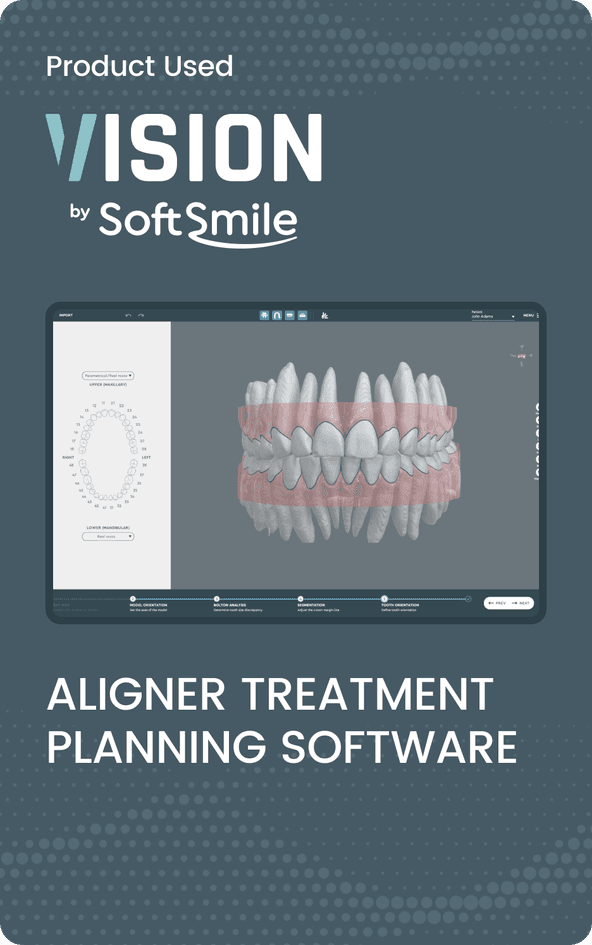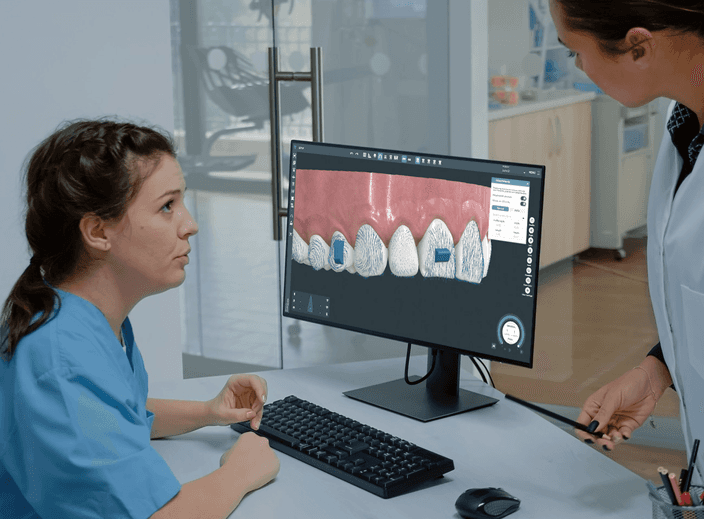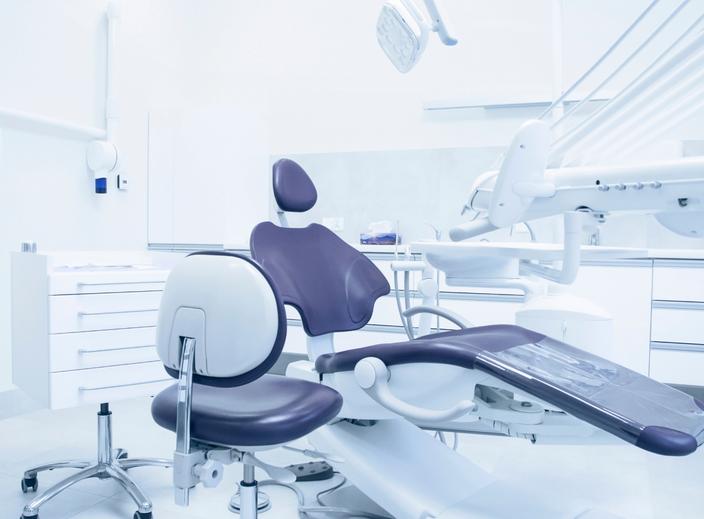July 06, 2025
How to Create an Orthodontic Treatment Plan: Free Template & Step-by-Step Guide

Dr Sugz Maha
General Dentist
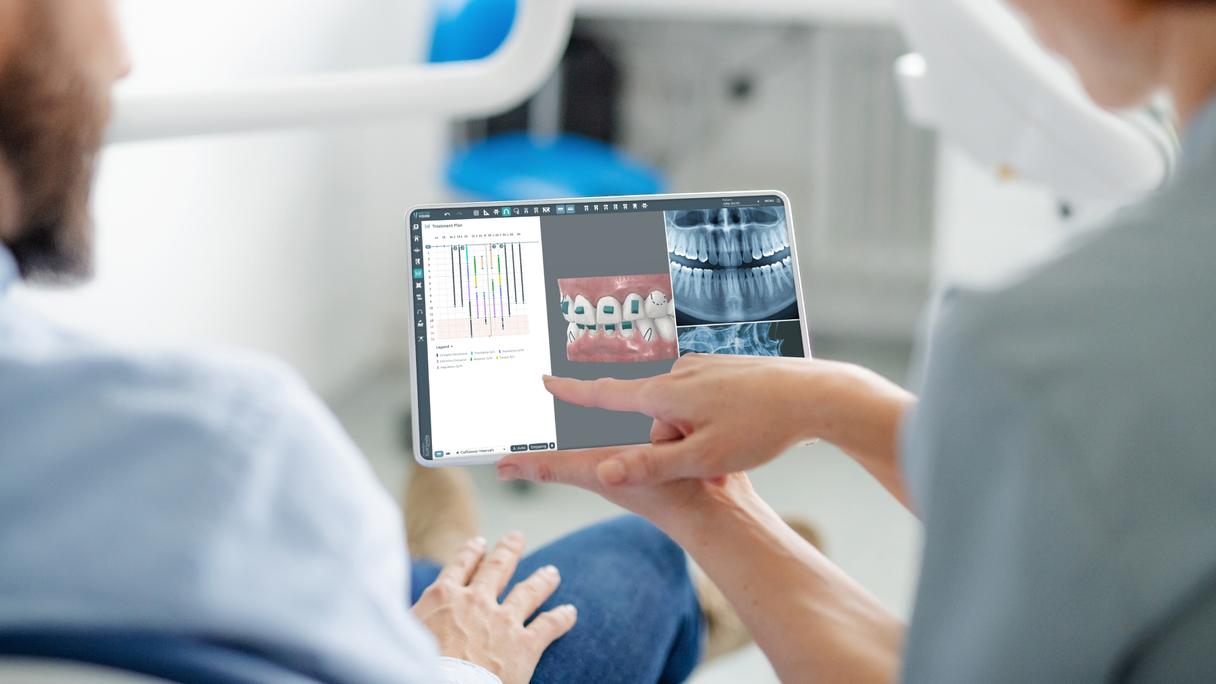
At SoftSmile, thousands of orthodontists use our tool for treatment planning, and we've learned a thing or two.
Through our collaborations, we've gained valuable insights into what makes an effective orthodontic treatment plan. We've seen what works and what doesn't.
Now, we're excited to share the same insights with you.
So, what does it take to create a successful orthodontic plan?
It's a combination of careful diagnosis, personalized remedy options, meticulous planning, attention to detail, and patient compliance.
In this article, you'll discover:
-
Common issues orthodontists address.
-
The range of treatment options available.
-
The diagnostic process and tools we rely on.
-
Components of a successful plan.
-
A free treatment plan template we've created for you.
Let's get started.
What Issues Does an Orthodontist Fix?
Orthodontists offer specialized dental treatments focused on correcting misaligned teeth. Dentists refer patients to an orthodontist when they have any of the following issues:
-
Crowding: Crowded teeth occur when there isn't enough jaw space to accommodate all the teeth in proper dental alignment. As such, patients will see some teeth overlapping, some twisted, and some bunched together.
-
Overbite: When a patient's top front teeth extend considerably beyond their lower teeth more than they should, they're said to have an overbite or "buck teeth."
-
Underbite: This is the reverse of overbite, where the lower front teeth extend significantly beyond the upper teeth.
-
Crossbite: This is a malocclusion or bad bite where the top and bottom jaws don't line up properly, causing one or more of the top teeth to bite down inside the bottom teeth.
-
Spacing issues: Orthodontists also help patients to close excessive gaps between teeth.
-
Impacted teeth: When a tooth is unable to break through the gum due to overcrowding or bone obstruction.
Orthodontic Treatment Options
When dealing with the dental issues highlighted above, orthodontists typically recommend any of the three main treatment options: aligners, braces, and retainers.
Aligners

Aligners are a pair of plastic-like trays tailored to the size and shape of your mouth. They work by applying enough pressure to move teeth in an intended direction.
You may recommend aligners for mild to moderate problems, including:
-
Most types of bad bites, such as underbite, overbite, crowded bite, and crossbite
-
Crooked teeth
-
Crowded teeth
-
Gapped teeth
Patients will need new aligners every 1-2 weeks as their teeth change position. Patients must wear clear aligners for a minimum of 22 hours daily for maximum effect.
In addition, patients must remove aligners before eating, drinking, or brushing to minimize wear and tear and ensure they still apply the required pressure.
Braces

Braces are dental devices used to apply constant pressure on the teeth. Beyond aesthetics, braces can also help enhance oral hygiene, improve speech, and make eating easier for patients.
There are different types of braces, including:
-
Metal
-
Ceramics
-
Lingual
-
Self-ligating
Who may need braces?
-
Anyone who cannot chew food well
-
Patients with jaw discomfort and misalignment
-
Anyone suffering from an underbite, an overbite, a crowded bite, or a crossbite
-
Delayed growth of adult teeth
Braces also require regular adjustments, often every 4-12 weeks, as the patient's dentition shifts towards the desired position. Depending on the severity of the dental problem, treatment length can be up to 36 months.
You may also add an elastic band to your patient’s braces to increase the pressure and move the teeth much quicker.
As required, you may also recommend other dental appliances like headgear or palatal expanders, alongside braces.
Retainers
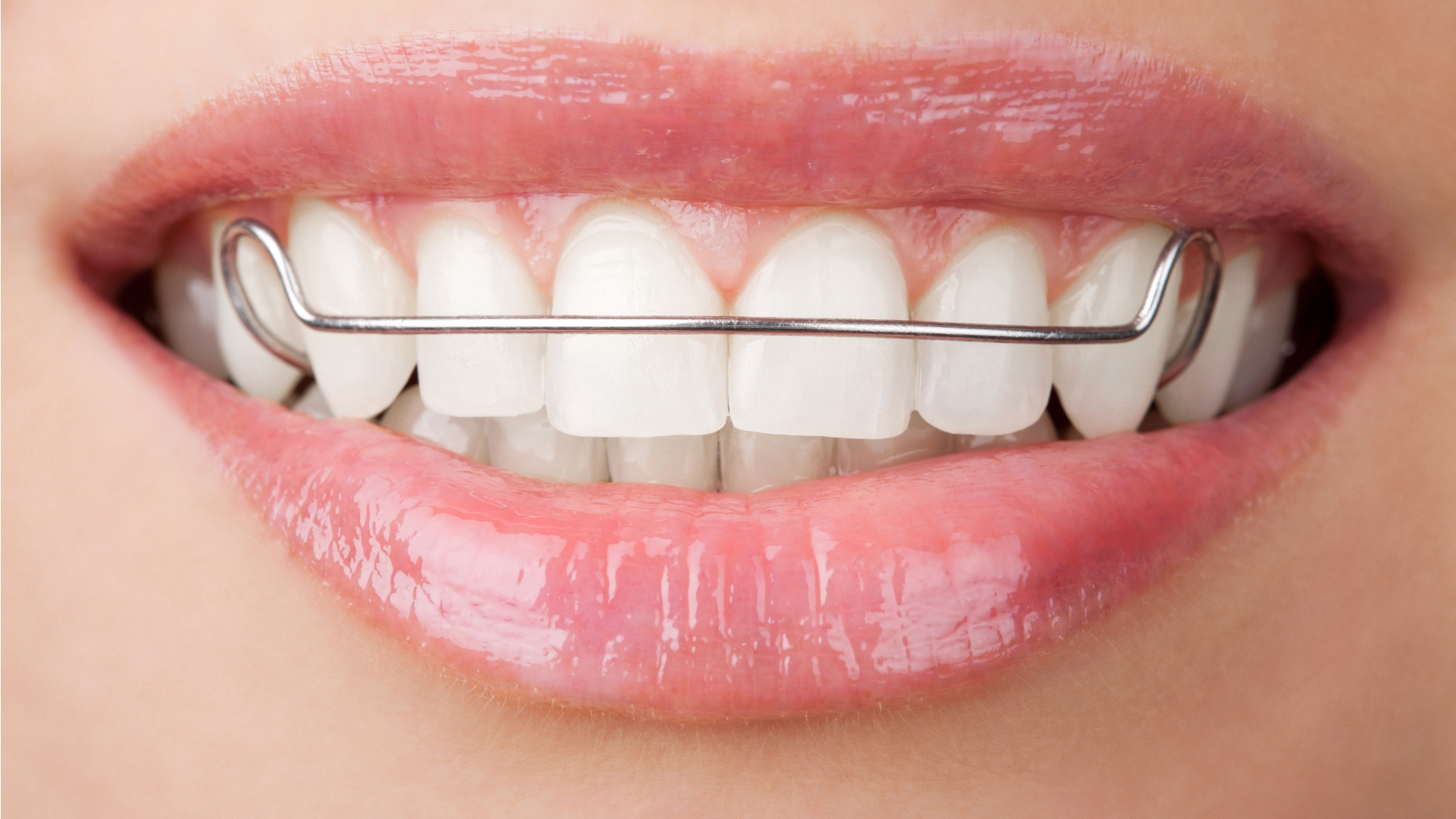
Retainers are not necessarily a treatment option; they are devices made from metal wires, clear plastic, or acrylic used to increase the longevity of results. They can be permanent or removable.
Teeth have a natural tendency to return to their initial position after treatment. Retainers ensure this does not happen.
In addition to keeping teeth in their new position, retainers also help support the bones around your patient’s teeth for this new reality.
Information Needed to Determine a Diagnosis
An orthodontist needs specific and accurate information to proffer the most effective treatment option for a particular case. A good treatment outcome rests significantly on accurate data and its analysis.
The diagnostic process consists of accessing the patient's medical records (with consent), patient interviews and questionnaires, and physical examination.
The required information typically includes:
-
Dental and medical history, including medical conditions and previous experience with braces and other orthodontic treatment options
-
Personal information like age, sex, and occupation
-
Primary dental complaint(s)
-
Expected goals and expectations
-
The patient's family dental history
-
Information gathered through diagnostic tools like X-rays and photographs
-
Additional information, like a patient
Many orthodontists also rely on AI-powered tools that can take all the information above and provide a relevant diagnosis.
Diagnostic Tools in Orthodontics
Diagnostics tools help you gain a comprehensive overview and understanding of the patient's teeth and current condition before recommending a treatment plan.
These tools include:
Dental Impressions

Dental impressions help orthodontists take a study model of a patient's teeth and gums, making it easier to examine their oral anatomy.
It requires placing a tray filled with silicone or alginate in the patient's mouth and asking them to bite down gently.
After a few minutes, the impression material is set and would have captured how the teeth and gum look.
Alternatively, orthodontists may use 3D scanning technology to generate a digital impression of a patient's teeth and mouth.
X-rays

X-rays or radiographs help dentists and orthodontists diagnose damage, disease, or structural issues that are impossible to see during regular physical examination or with dental impressions.
They can reveal infection in the root of your tooth, cavities, jaw problems, gum disease, bone loss, jaw development issues in children, and much more.
There are different types of X-rays, including:
-
Periapical x-ray
-
Panoramic x-ray
-
Occlusal x-ray
-
Lateral cephalometric x-ray
-
Bite-wings
-
Cone-beam computed tomography (CBCT) or 3-D X-rays
Intraoral Examination
An intraoral examination checks the patient’s teeth, gums, tongue, and other oral tissues for cavities or tooth decay, gum inflammation or diseases, abnormalities like ulcers, and overall dental hygiene.
It often involves the following:
-
Examination of the tongue
-
Examination of the palate
-
Examination of gingiva
-
Examination of frenal attachment
-
Examination of tonsils and adenoids
-
Dentition assessment
Intraoral and Extraoral photos

Orthodontists photograph the outside and inside of a patient's mouth to determine what is happening with the teeth and mouth.
Intraoral photos are taken inside the patient's mouth, while extraoral images are taken outside.
Medical History
While not necessarily a diagnostic tool, the patient’s medical history plays an important role in crafting an orthodontic treatment plan.
Although most conditions do not contraindicate the use of dental appliances, they, however, require precautions and considerations. Examples include:
-
Diabetes mellitus
-
Endocarditis
-
Hemophilia A
-
Asthma
-
Epilepsy
-
Chronic renal failure
What Does an Orthodontic Treatment Plan Look Like?
An orthodontic treatment plan is a roadmap that offers detailed descriptions and timelines of the entire process required to fix a patient's smile.
Think of it as a guide that helps your patients know the path they must take to realize their smile goals.
Aren't all plans the same? Well, no!
Every plan is different and tailored to each patient's unique issues discovered during diagnosis and desired goals.
However, all plans consist of several essential components, including:
1. Initial Assessment

The initial consultation is where you thoroughly assess your patient's oral health.
This phase includes physical examinations, reviewing medical history, X-rays, and 3-D imaging of the patient's facial structure, mouth, teeth, and jaw.
It's also critical to hear your patient's complaints and desires during this stage.
2. Diagnosis
The initial assessment gives you enough information to make a more informed diagnosis. You know the patient's exact orthodontic condition and can propose the right options to correct the dental concerns.
3. Treatment Planning

After diagnosing the patient's condition, this is where you create a personalized plan and sit down with them to discuss different care options.
This conversation is a two-way street. Allow your patients to ask questions and share their fears or concerns.
Ensure you provide comprehensive answers to their concerns and questions, and highlight the importance of committing to the chosen treatment option.
For more complex dental issues, you may collaborate with other specialists, like endodontists or periodontists, to ensure your patient the most comprehensive care possible.
4. Financial Planning
Present the overall cost of treatment to your patient. Where applicable, you may split the treatment into different phases and provide the cost of each phase.
At this stage, you’ll also discuss insurance coverage, available payment plans or discounts, and any out-of-pocket expenses with patients so they can fit the needed care into their budget and financial plans.
5. Monitoring and Adjustments

The plan also captures the schedule and timeline for patients to come in for progress monitoring once treatment begins.
Indicate when and how often a patient has to come in for checkup. This is essential, so they can plan and commit to their treatment plan.
You can assess if an option is working as planned, adjust braces or replace aligners, and get feedback on how patients are responding to care.
6. Completion and Retention
After undergoing treatment and removing the dental appliance, the focus shifts to ensuring the gains from the process last a long time. All that hard work, time, and resources must not go to waste.
As such, the plan will include details about what will happen following the removal of the orthodontic appliance.
Are they going to wear a wire or clear plastic? Will it be a permanent or temporary retainer? These are some of the questions your treatment plan must answer.
Tips for Effective Treatment Planning
Below are essential tips to help orthodontists create effective, personalized treatment plans that evolve with the patient’s needs:
Use Updated Patient Data
Always update patient data for returning patients before creating a treatment plan. Every time a patient visits your clinic, ensure you review their information for accuracy and relevance.
A child you treated six months ago may have experienced a growth spurt that may nullify certain treatment plans.
Go Beyond the Reason for Referral
Going beyond why your colleagues referred the patient to you is consequential towards a successful and effective treatment outcome.
Unearthing the patient’s chief complaint and addressing it also improves patient compliance with treatment.
Factor in the Patient's Lifestyle and Habits
Habits such as thumb-sucking, tongue-thrusting, and teeth grinding (bruxism) can interfere with treatment success.
Educate the patient and their guardians about these habits and include corrective strategies in the plan.
Involve the Patient and Caregivers in Decision-Making
A collaborative approach that listens to patients and guardians ensures they fully understand the problem and are more willing to follow through with appointments and treatment.
Regularly Review and Adjust the Treatment Plan
Orthodontic treatment is dynamic, particularly in children and teens who are still growing. This allows you to reassess and tweak the plan to reflect the patient’s evolving needs.
Bonus: Free Orthodontic Treatment Plan Template
SoftSmile offers a free orthodontic treatment plan template to help you create clear, comprehensive patient roadmaps.
It covers everything from initial assessment to completion.
The template is easy to use, fully editable, and can be customized with your own branding.
https://docs.google.com/document/d/112JGqYQZb7COyFMmOevyva7tDk8foA-ruL9WTO7nb60/edit?usp=sharing
Final Thoughts
Creating a successful orthodontic treatment plan is all about understanding your patient's unique needs and combining this with the right diagnostic tools and treatment options.
Leverage our free treatment plan template and the steps we provided to streamline your workflow, save time, and deliver exceptional care to your patients.
Are you ready to supercharge your treatment planning? Discover how SoftSmile's AI-driven software can transform your practice with optimized teeth movement and treatment outcomes. Experience it for yourself with a free trial today!
SoftSmile — Orthodontic Treatment Planning Software
Imaging and treatment planning software is essential for precise, efficient orthodontic care. SoftSmile's VISION software uses AI and 3D visualization for accurate, customized aligner treatment planning for orthodontists.
Its main features include:
-
Automated setup and staging
-
Automated manufacturing
-
Integration with 3D printers and other fabrication equipment
-
Model preparation
-
Care plan setup
Explore SoftSmile's benefits with an interactive demo today.

Dr Sugz Maha
General Dentist
Sign up for our newsletter!
Case Studies, Podcasts, Ebooks, Events, Webinars, Company news, and more...
By subscribing you agree to the Terms of Use and Privacy Policy.

